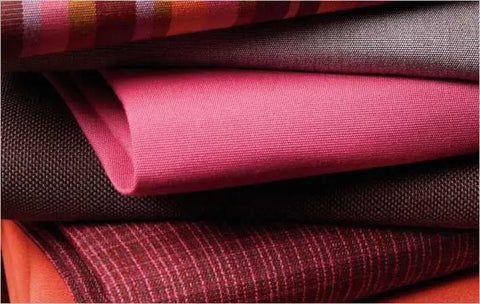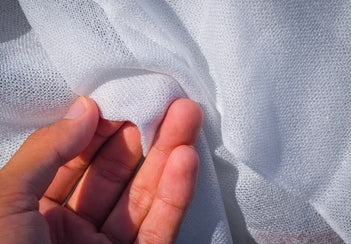Introduction of Textiles:
Textiles are known to be any kind of cloth or goods that are produced by weaving, knitting, or even felting processes. Coming from the Latin word ‘textiles’, textile means ‘woven’. It is deemed an umbrella term under which various fibre-based materials like yarns, threads, and filaments are used. In the past and even today, textiles satisfy the needs of materials for versatile uses and are divided into two groups, domestic purposes and technical textiles. Domestic or consumer textiles are the ones that we shall be focusing on throughout this piece. The thickness, width, and other such properties of the material are of vital importance.

Details of Textile Thickness:
Fabric or textile thickness is defined as the distance between, or the space between, the two surfaces of a piece of fabric under the specific applied pressures, which depends on and varies according to whether the textile is compressible or not (Science Direct, 2015)
It can have many effects on the usage and the outcome of what can be done with the textile and in what way and form it will be used. The textile fabric thickness helps determine the material's stiffness and the extent to which the fabric can be draped or conformed into making a specific kind of product. For example, extremely thick fabrics are more suitable for making curtains or bed covers than for clothing products like Kurtis. Fabric thickness also affects the level to which air is permeable in the materials, the moisture absorbency and the abrasion resistance. Abrasion resistance is the ability of the textile to withstand wear and tear of the materials, which could be caused by friction by mechanical parts, probably during the production of the item, or by repetitive scraping or rubbing of the material, usually during the cleaning and washing process that the textile undergoes. The thickness of the textile can determine how resilient it is; thinner fabrics may be more susceptible to wear and tear than thicker fabrics, accredited to their width and thickness. 
In most simple woven textiles and fabrics, like plane waves, satin, or even twill, the thickness is measured to be close to the sum of yarn diameters in the warp and weft. This results from the crimp curvature, which I usually offset by the yarn compression, which occurs between the warp and weft yarns. The yarn curvature of the plane of the fabric contributes heavily to the effectiveness of the fabric, as well as the thickness. An example of this is when ribbed or jersey fabrics are looked into, the yarn curvature is presented with inter-stitches that connect the face and reverse loops of the stitching, making the fabric significantly thicker by four times the yarn diameter.
Types of Textile Thickness:
Many individuals are likely to consider the thickness of the fabric and its construction before purchasing it for specific purposes. The thickness will influence the material's warmth, how easily it can get wrinkled, and whether the textile is sheer or gives an opaque appearance. There are six types of Fabric thicknesses that we can assess; the first is Lightweight fabrics (Proper Cloth).
These are known to be the lightest fabrics on the market and are breathable and considered the best option in warm weather. They have a higher tendency to wrinkle but can also be sheerer than thicker fabrics, but they get more opaque as the colour of the textile gets darker. Some textiles under this category are linens, cotton, linen blends, and a type of textile known as Miles Broadcloth.
The second type of fabric that we come across is the Lightweight Fabrics, which are still light but have a little more body to them as compared to very lightweight ones. Wethe Lightweight Fabrics, which are still light but have a little more body to them come across are the Lightweight Fabrics, which are still light but have a little more body to them than. They are known to be a good option for all-year-long wear and are slightly more wrinkle-resistant than the previous type. These textiles drake well and are also an excellent material used for business wear and outfits. Examples of this category would be the Charles Twill, Weston Pinpoints, and Cooper Stretch Twill.
Medium-weight fabrics include some more casual weaves and tend to have an excellent moderate width, and body of their own, causing them to hold up reasonably well against wrinkling. They barely have any issues with opacity and only do so when the colour and a of the fabric are white or shades. Fabric colour is white or shades of Light flannels, non-iron fabrics, and chambray are some of the types under this category. On the other hand, Medium Heavyweight fabrics are the most suitable for cool weather and good options for casual wear outfits. They are known to be naturally wrinkle-resistant and give the wearer a feeling of warmth. These fabrics could come under the weaving category and are great for formal wear. The most famous type of material under this is Flannel material.
The fifth type we may come across is the Heavyweight fabrics, which tend to hold heat well and are long-lasting and durable. This is a result of the thickness of the fabric and the fact that the thickness packs in the heat between the surfaces and makes the fabric more resistant. Similarly, the Very Heavyweight fabrics are the thickest of their kind and are decidedly announced as the fabrics used for cold-weather clothing. They also tend to have a more visible texture on the surface. Both these categories include fabrics such as heavy oxfords, types of denim, and even flannels of a thicker kind.
Measuring fabric thickness:
The thickness of the fabric is generally measured by looking into the distance between the upper and lower layers of the material and is done by making direct observations and calculations of the fabric cross-sectioning using a microscope (as in the conventional method) or even other modes of calculation. There are also inventions of a digital fabric thickness tester, which is used to measure the thickness and gives us quick results with good mobility features. In this scenario, the fabric is placed onto the instrument, after which a circular disc is released from the top part of the device. The distance between the upper and baseplate, between which the fabric is placed, is digitally measured and shown on the digital screen. This distance is taken as the thickness of the fabric that was being tested.
 {Image credit:-BTEX Engineering}
{Image credit:-BTEX Engineering}
iTokri and the kind of textiles that the house:
iTokri, famous for uplifting and supporting handicrafts and weavers that still work with traditional methods in India, houses a wide array of textiles and fabrics for clothing and other purposes on their site. The first segregation for this would be by printing techniques, weaving techniques, and also by Material. These materials are of varying thicknesses and widths, giving us various options to choose from and select according to our needs and objective for the fabric. Some of these options are Cotton, Silk, and Linen, known to be lightweight fabrics, while also keeping fabrics like Chanderi, Mulberry, Tussar, and Maheshwari silk which is comparatively thicker. These are high-quality, affordable, authentic textiles sourced from the finest weavers and artisans.
FAQ:
-
What is textile thickness?
Fabric or textile thickness is defined as the distance between, or the space between, the two surfaces of a piece of fabric under the specific applied pressures, which depends on and varies according to whether the textile is compressible or not (Science Direct, 2015)
-
How does the thickness of the textile affect the product?
It can have many effects on the usage and the outcome of what can be done with the textile and in what way and form it will be used. The textile fabric thickness helps determine the material's stiffness and the extent to which the fabric can be draped or conformed into making a specific kind o product.
-
What are the different types of textiles that we can categorise based on their thickness?
Very Lightweight fabrics, Lightweight Fabrics, Medium-weight fabrics, Medium Heavyweight, Heavyweight fabrics and Very Heavyweight fabrics.
-
How is the thickness of the fabric measured?
The thickness of the fabric is generally measured by looking into the distance between the upper and lower layers of the material and is done by making direct observations and calculations of the fabric cross-sectioning using a microscope (as in the conventional method) or even other modes of calculation.
-
What are some examples of textiles under the different thickness categories?
Very Lightweight fabrics: cotton and linen blends
Lightweight Fabrics: Charles Twill, Weston Pinpoints
Medium Weight Fabrics: Light flannels, non-iron fabrics,
Medium Heavyweight: flannels
Very Heavyweight: heavy oxfords, types of denim
-
Give names of some types of textiles available on iTokri.
Cotton, Silk, and Linen, known as lightweight fabrics, while also keeping materials like Chanderi, Mulberry, Tussar, and Maheshwari silk, which is comparatively thicker, are available on iTokri. These are high-quality, affordable, authentic textiles sourced from the finest weavers and artisans.
Blogs you might also like:
Pochampally Ikat - Excerpts from conversation
Pedna Kalamkari - In Conversation with Pitchuka Srinivas
The Khatri family, who practices Rogan Art
 Verified Purchase
Verified Purchase
































Leave a comment (all fields required)